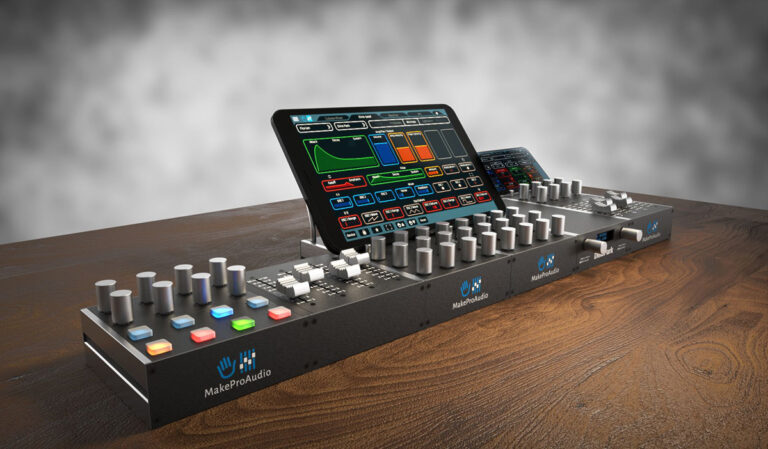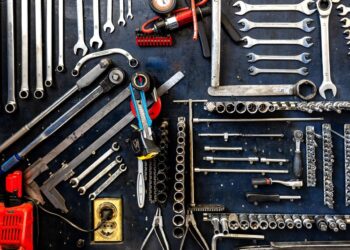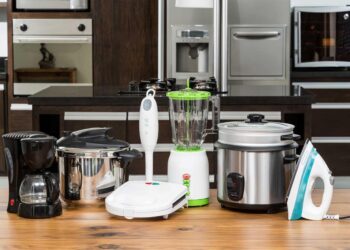For professionals and serious enthusiasts in the world of audio, upgrading your pro audio kit isn’t just about acquiring new gear; it’s a strategic investment in sound quality, workflow efficiency, and creative potential. The landscape of audio technology is constantly evolving, with innovations in every segment, from recording and mixing to live sound and broadcast. This comprehensive guide will delve into the essential areas where upgrades can make a tangible difference, exploring the latest advancements, offering practical advice, and helping you navigate the myriad of options available. Whether you’re a seasoned producer, a gigging musician, a podcast creator, or a broadcast engineer, understanding these key areas will empower you to make informed decisions that elevate your sound to the next level.
Microphones
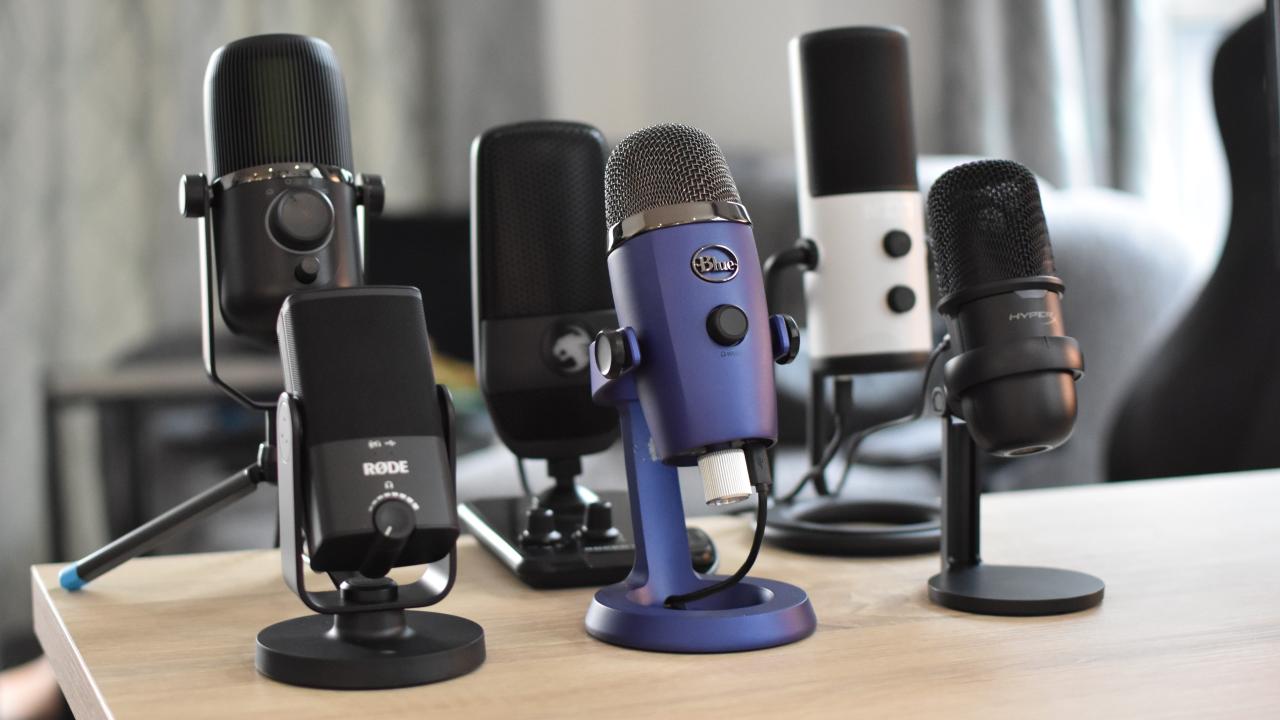
The microphone is the first crucial link in the audio chain. Its quality and suitability for the source fundamentally dictate the fidelity and character of your sound. Upgrading your microphone locker is often one of the most impactful improvements you can make.
A. Condenser Microphones
Condenser microphones are renowned for their sensitivity, wide frequency response, and ability to capture intricate details, making them ideal for studio recording of vocals, acoustic instruments, and delicate sound sources.
- Large-Diaphragm Condensers (LDCs): These are the workhorses of professional studios. An upgrade here might mean moving from an entry-level LDC to a high-end model with a flatter frequency response, lower self-noise, or switchable polar patterns (cardioid, omnidirectional, figure-8) for greater versatility in different recording scenarios. Premium LDCs often feature hand-selected components and superior capsules that deliver a richer, more accurate sound. Brands like Neumann, AKG, and Audio-Technica offer excellent options.
- Small-Diaphragm Condensers (SDCs): Often called “pencil condensers,” SDCs excel at capturing transients and detailed highs, making them perfect for drum overheads, acoustic guitars, strings, and choirs. Upgrades might focus on matched pairs for stereo recording, or models with extended high-frequency response and improved off-axis rejection.
- Tube Condensers: For a warmer, richer, and often more “vintage” sound, tube condenser microphones utilize vacuum tubes in their preamplifier stage. An upgrade to a quality tube mic can add a desirable harmonic richness and smoothness to vocals and instruments, often preferred for their musicality.
B. Dynamic Microphones
Dynamic microphones are durable, can handle high sound pressure levels (SPLs), and are excellent for live sound, amplified instruments, and aggressive vocals.
- Stage Vocals and Instruments: Classic dynamic mics like the Shure SM58 (vocals) or SM57 (instruments) are industry standards. Upgrades here might involve moving to supercardioid or hypercardioid patterns for better feedback rejection on stage, or models with enhanced frequency response tailored for specific instruments (e.g., bass drums, guitar cabs). Wireless versions with superior clarity and range are also key upgrades for live performers.
- Specialty Dynamics: Consider specialized dynamic mics for specific applications, such as large-diaphragm dynamics for kick drums, or dynamics with unique frequency contours for certain guitar amplifiers.
C. Ribbon Microphones
Ribbon microphones offer a unique, smooth, and warm sonic character, often favored for vocals, brass, and guitar amplifiers where a less “bright” or aggressive sound is desired.
- Modern Ribbon Designs: While historically fragile, modern ribbon mics are far more robust and can even handle phantom power (though caution is still advised with older models). Upgrades can bring a beautiful, natural sound with excellent rejection from the sides due to their inherent figure-8 polar pattern.
Audio Interfaces
The audio interface is the bridge between your analog microphones/instruments and your digital audio workstation (DAW). Its quality directly impacts conversion fidelity, latency, and the number of simultaneous inputs/outputs.
A. Preamplifiers
The preamplifiers within an audio interface amplify the delicate microphone signal to a usable line level. High-quality preamps are essential for clean, transparent recordings.
- Clean Gain and Low Noise: Upgrading often means seeking preamps with more clean gain (the amount of amplification before noise becomes an issue) and lower self-noise. This is particularly important for quiet sources or when using low-output microphones like ribbons.
- Discrete Components and Transformer-Based Designs: Premium interfaces often feature discrete components or transformer-based preamps, which can impart a desirable warmth or character to the sound.
- External Preamps: For the ultimate upgrade, consider investing in dedicated external microphone preamplifiers. These often offer superior components, unique sonic characteristics (tube, solid-state, transformer-based), and specialized features like high-quality DI inputs for instruments. Brands like Universal Audio, Focusrite (RedNet series), and Apogee are highly regarded.
B. Analog-to-Digital (A/D) and Digital-to-Analog (D/A) Converters
The A/D and D/A converters are responsible for translating analog signals into digital data and vice-versa. Their quality is paramount for maintaining sonic integrity.
- Purity and Detail: Upgrading converters means striving for greater accuracy, lower distortion, wider dynamic range, and a more faithful reproduction of the original analog signal. High-end converters provide a clearer, more detailed sound, making mixing and mastering decisions easier and more accurate.
- Higher Sample Rates and Bit Depths: While not always necessary, interfaces supporting higher sample rates (e.g., 96 kHz, 192 kHz) and bit depths (24-bit, 32-bit float) can offer greater fidelity and headroom, particularly beneficial for complex productions.
C. Connectivity and I/O Count
- Thunderbolt and USB 3.0/C: Modern interfaces leverage high-speed connections like Thunderbolt or USB 3.0/C for ultra-low latency, crucial for monitoring during recording and for demanding plugin use.
- Increased I/O: As your studio grows, you’ll likely need more simultaneous inputs and outputs. Upgrading to an interface with more mic preamps, line inputs, and dedicated monitor outputs allows for more complex recording setups (e.g., full drum kits, multiple vocalists) and advanced mixing workflows (e.g., external hardware inserts).
- ADAT and MADI Expansion: For massive I/O expansion, look for interfaces with ADAT or MADI ports, allowing you to connect external multi-channel preamps or additional converters.
- Networked Audio (Dante, AVB): For professional studios, live sound, and broadcast, networked audio protocols like Dante or AVB revolutionize signal routing and distribution, offering unparalleled flexibility and scalability over standard Ethernet cables. Upgrading to a Dante-enabled interface can streamline complex setups.
Studio Monitors and Headphones
Accurate monitoring is essential for making informed mixing and mastering decisions. If you can’t hear what’s truly happening in your audio, you can’t fix it.
A. Studio Monitors
Studio monitors are designed for flat frequency response, allowing you to hear your mix without coloration.
- Flat Frequency Response: Upgrading to higher-quality monitors generally means achieving a flatter frequency response across the audible spectrum, revealing subtle details and imbalances that cheaper speakers might mask.
- Improved Transient Response and Stereo Imaging: Better monitors offer superior transient response, allowing you to hear the attack and decay of sounds more clearly, and more accurate stereo imaging, helping you place sounds precisely in the mix.
- Size and Room Acoustics: Consider the size of your monitors relative to your room. Larger rooms might benefit from 8-inch woofers, while smaller rooms are better suited for 5-inch or 6.5-inch woofers. Adding a subwoofer can extend low-frequency response, crucial for genres with prominent bass. However, room acoustics are just as important as monitor quality. Investing in acoustic treatment (bass traps, diffusers, absorption panels) can dramatically improve the accuracy of your monitoring environment, often more so than just buying new speakers.
- Active vs. Passive: Most professional studio monitors are active (self-powered), which simplifies setup and ensures optimal amplification for the speakers. If you have passive monitors, upgrading your power amplifier can also yield significant improvements.
- Brands to Consider: Yamaha (HS series), KRK (Rokit series), JBL (LSR/3 Series) are popular entry/mid-level. Focal, Genelec, Neumann, Adam Audio, and Barefoot Sound represent higher-end professional options.
B. Studio Headphones
Studio headphones offer an alternative or supplementary monitoring solution, providing isolation and critical detail.
- Closed-Back vs. Open-Back:
- Closed-back headphones provide excellent isolation, making them ideal for tracking vocals or instruments to prevent microphone bleed. Upgrades here focus on comfort for long sessions and improved low-end response.
- Open-back headphones offer a more natural, spacious soundstage and flatter frequency response, making them preferred for mixing and critical listening, though they provide less isolation. Upgrades focus on sonic transparency, comfort, and extended frequency response.
- Comfort and Durability: For long studio sessions, comfort is paramount. Look for models with comfortable ear pads and adjustable headbands. Durability is also key for frequent use.
- Wireless vs. Wired: For critical studio work, wired headphones are still preferred for their zero latency and lossless audio transmission. Wireless options offer convenience for casual listening or monitoring in less critical scenarios.
Digital Audio Workstation (DAW) and Plugins
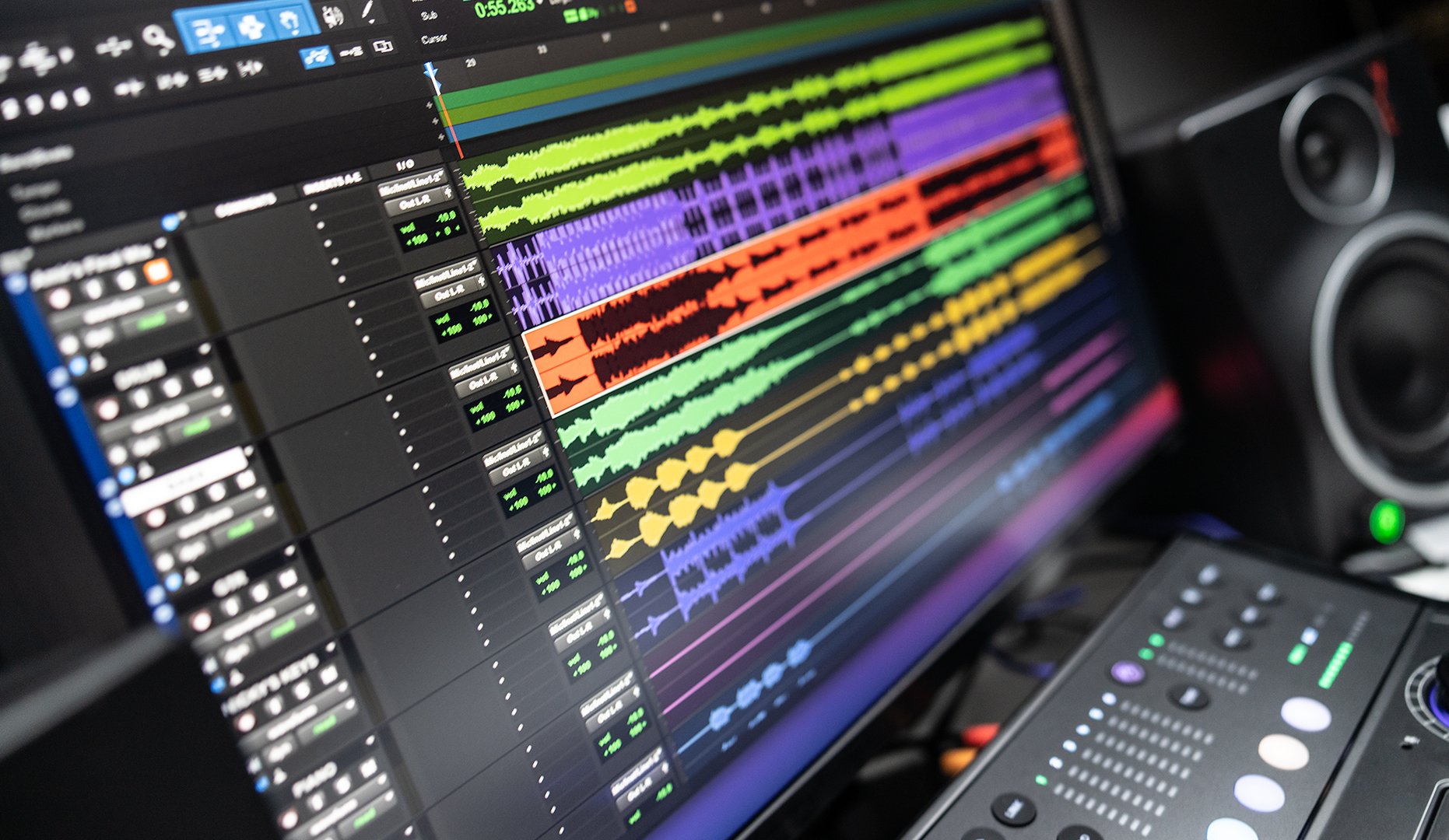
Your Digital Audio Workstation (DAW) is the central hub for all your audio production. While the core DAW might remain, upgrading its capabilities through plugins and optimizations is continuous.
A. DAW Software Upgrades
- Latest Versions: Staying updated with the latest versions of your chosen DAW (e.g., Pro Tools, Logic Pro, Ableton Live, FL Studio, Cubase, Studio One) often brings new features, improved performance, workflow enhancements, and compatibility with new operating systems and plugins.
- Advanced Editions: Some DAWs offer different editions (e.g., standard, professional, ultimate). Upgrading to a higher-tier edition can unlock advanced features like surround sound mixing, more tracks, advanced metering, or bundled premium plugins.
B. Essential Plugin Categories
Plugins are software tools that process audio. Strategic plugin upgrades can dramatically enhance your mixing and mastering capabilities.
- Equalizers (EQs): Beyond stock EQs, invest in high-quality EQ plugins that offer transparent parametric, precise surgical, or characterful analog-modeled options. Examples include FabFilter Pro-Q 3, Waves SSL E/G-Channel, or Universal Audio’s Pultec emulations.
- Compressors: A varied arsenal of compressor plugins is crucial. Look for transparent compressors for subtle dynamics control, analog-modeled compressors (e.g., LA-2A, 1176, SSL Bus Compressor) for character and punch, and multi-band compressors for precise frequency-specific dynamics.
- Reverbs and Delays: High-quality reverb and delay plugins create space and depth. Consider algorithmic reverbs for realistic room simulations, convolution reverbs for capturing real-world acoustic spaces, and creative delays for rhythmic effects. Valhalla DSP, FabFilter, and Universal Audio offer excellent options.
- Saturation and Distortion: For adding warmth, grit, or harmonic richness, saturation and distortion plugins can be invaluable. Analog tape emulations, tube saturation, or transformer emulations can add a desirable “analog” feel to digital tracks.
- Noise Reduction and Restoration: For post-production, podcasting, or cleaning up old recordings, noise reduction and audio restoration plugins (e.g., iZotope RX) are essential for removing hum, hiss, clicks, and other unwanted artifacts.
C. Virtual Instruments
For music producers, upgrading your virtual instrument collection can open up vast creative possibilities.
- Realistic Sample Libraries: High-quality sample libraries for orchestral instruments, drums, pianos, and synthesizers offer unparalleled realism and versatility. Consider platforms like Native Instruments Kontakt, Spitfire Audio, or EastWest for professional-grade sounds.
- Synthesizers: Software synthesizers can range from classic analog emulations to cutting-edge granular or wavetable synths. Upgrading your synth collection can provide new textures and sonic capabilities for sound design and composition.
Outboard Gear and Hardware Processors
While plugins offer immense power, dedicated outboard hardware still holds a revered place in many professional studios for its unique sonic characteristics, tactile workflow, and often superior sound quality in certain applications.
A. Analog Preamps and Channel Strips
- Dedicated Preamps: As mentioned, high-end external microphone preamps can add significant color or transparency to your recordings before the signal even hits your interface’s converters.
- Channel Strips: A channel strip combines a preamp, EQ, and compressor (and sometimes other processors) into a single unit, offering a complete analog signal path for a single input. Upgrading to a quality channel strip can streamline tracking and impart a distinct sonic signature.
B. Hardware Compressors and EQs
- Classic Recreations and Modern Designs: Investing in a high-quality hardware compressor (e.g., an 1176, LA-2A, or SSL bus compressor clone) or an analog EQ can bring a different kind of magic to your mix. The physical interaction and the subtle, often pleasing, non-linearities of analog circuitry are difficult for plugins to perfectly replicate.
- Mastering-Grade Processors: For mastering engineers, dedicated hardware mastering EQs and compressors are often considered essential for achieving the final polish and analog warmth on a master.
C. Summing Mixers
- Analog Summing: A summing mixer takes multiple digital audio tracks from your DAW, converts them to analog, sums them together in the analog domain, and then sends the stereo mix back into your DAW. Many engineers believe this process adds a subtle width, depth, and glue to a mix that digital summing alone cannot achieve.
D. Signal Processors and Effects
- Reverbs and Delays: While excellent reverb plugins exist, dedicated hardware reverb units (e.g., Lexicon, Eventide) or delays can offer unique algorithmic sounds and a distinct character often preferred in certain genres or for specific effects.
- Outboard Effects: Specialized hardware effects like chorus, flanger, phaser, or unique distortion units can add a distinctive flavor to your sound that’s hard to replicate with plugins.
Cables and Power Conditioning
The often-neglected aspects of cabling and power conditioning can have a surprisingly significant impact on overall audio quality and system reliability.
A. High-Quality Cables
- Balanced XLR and TRS Cables: For all professional audio connections (microphones, line inputs/outputs, monitors), balanced XLR and TRS cables are essential. They help reject noise and interference over long cable runs. Upgrading to cables with high-quality connectors (e.g., Neutrik) and good shielding can reduce signal degradation and unwanted noise.
- Instrument Cables: For guitars and other instruments, investing in durable, well-shielded instrument cables with quality connectors minimizes hum, buzz, and signal loss.
- Speaker Cables: For passive monitors, proper gauge and quality speaker cables are crucial for delivering power efficiently to the speakers without loss or coloration.
B. Power Conditioning and Distribution
- Surge Protectors vs. Power Conditioners: A standard surge protector guards against voltage spikes, but a true power conditioner goes further. It filters out electromagnetic interference (EMI) and radio frequency interference (RFI) from your AC power line, which can manifest as hum or noise in your audio system. This provides a cleaner power supply to your sensitive audio equipment.
- Voltage Regulators: In areas with unstable power, a voltage regulator can ensure a consistent voltage supply to your gear, preventing performance issues or potential damage.
- Grounding and Hum Elimination: Proper grounding is essential to prevent ground loops, which cause audible hum. Power conditioners often aid in this, but understanding your studio’s grounding scheme and using tools like ground lifters (cautiously) can be necessary for stubborn hum issues.
Workflow and Ergonomics
While not “audio gear” in the traditional sense, optimizing your workspace and workflow can directly impact your productivity, comfort, and ultimately, the quality of your output.
A. Studio Furniture and Ergonomics
- Studio Desk: A purpose-built studio desk provides ergonomic placement for your monitors, keyboard, and mouse, often with integrated rack space for outboard gear. Proper monitor height (tweeters at ear level) and distance are crucial for accurate listening.
- Comfortable Chair: For long hours in the studio, an ergonomic, comfortable chair with good lumbar support is a must to prevent fatigue and back pain.
- Monitor Stands: Isolation monitor stands decouple your speakers from your desk, preventing vibrations from coloring the sound and allowing for precise placement.
B. DAW Controllers and Control Surfaces
- Faders and Knobs: While mouse and keyboard are standard, DAW controllers with physical faders, knobs, and transport controls offer a more tactile and intuitive mixing experience. This allows for more fluid automation and a deeper connection with your mix. Examples include Behringer X-Touch, Avid S1, or Universal Audio’s Apollo Console.
- MIDI Keyboards/Controllers: For music production, a quality MIDI keyboard controller with velocity-sensitive keys, pads, and assignable knobs/faders is essential for playing virtual instruments and controlling DAW parameters.
C. Storage and Organization
- Cable Management: Neatly managed cables reduce clutter, improve air circulation, and prevent signal interference. Use cable ties, velcro straps, and cable trays.
- Rackmounts and Cases: For outboard gear, rackmount cases offer protection, organization, and efficient airflow. For portable setups, robust road cases protect your valuable equipment during transport.
- Backup Solutions: Crucial for any digital workflow. Invest in reliable external hard drives (SSDs for speed), cloud storage, and automated backup routines to protect your irreplaceable projects and data. Losing a project due to hardware failure is a nightmare scenario.
Conclusion
Upgrading your pro audio kit is an ongoing journey, driven by technological advancements, evolving creative needs, and the pursuit of sonic excellence. By strategically investing in high-quality microphones, audio interfaces, monitoring solutions, and powerful software tools, you can significantly enhance every stage of your audio production workflow. Remember that the most impactful upgrades aren’t always the most expensive; sometimes, addressing an acoustic issue in your room or optimizing your cabling can yield more profound results than a new piece of hardware.
Ultimately, the goal is to build a system that inspires creativity, delivers uncompromising fidelity, and empowers you to realize your artistic vision with clarity and confidence. Stay informed about new technologies, experiment with different tools, and never stop refining your ears and your craft. The world of pro audio is rich with possibilities, and with the right upgrades, your sound can truly stand out.

